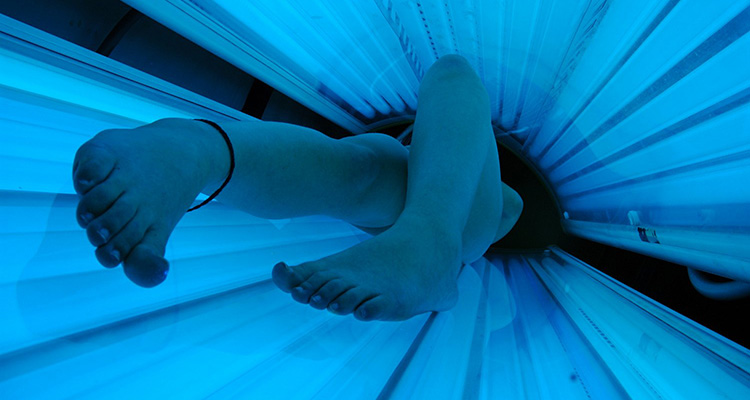Just how dangerous is indoor tanning?
A couple of weeks ago, colleagues from the University of Michigan published an article with a rather stark recommendation:
Recognizing the economic impact of any ban on the twenty thousand indoor tanning businesses and their employees, we would advocate … an immediate age limited ban on indoor tanning in all U.S. states, enforced through licensing requirements and random inspections, followed by a five-year phase-in ban for all commercial tanning.
The recommendation was based on clear evidence of an association between tanning beds and skin cancer – especially amongst young people – and the substantial health impact burden this results in.
The article is behind a paywall sadly (available here if you have access privileges). Fortunately though, the essence of the piece is captured in this Risk Bites video, and in this must-read article in The Conversation by lead-author Diana Bowman.
From the piece in The Conversation:
- In the US, approximately five million individuals are diagnosed and treated for skin cancer each year.
- Melanoma is the deadliest form of skin cancer, accounting for approximately 9,000 deaths each year in the US.
- The International Agency for Research on Cancer (IRAC), part of the World Health Organization (WHO) has classified UV-emitting tanning devices as a Group I carcinogen – a classification that includes tobacco smoke from cigarettes.
- Of the five million cases of skin cancer diagnosed each year in the US, researchers have estimated that 8% (or 400,000) of these cases can be attributed to indoor tanning.
- About 30 million people tan indoors in the US every year, and about 2.3 million of them are teens. And research indicates, for example, that the lifetime risk of skin melanoma increases by 75% among people who began using UV tanning devices before age of 35 (called young exposure).
- Researchers in Texas found that apartment buildings near some college campuses offer free indoor tanning to lure students. And a study of 125 college and university campuses in the US found that almost half had indoor tanning facilities on campus or in off-campus housing.
To understand how the risks are driving moves to ban commercial fanning bed use around the world, I’d highly recommend reading Bowman’s piece in full.
For more information:
Original Article: The Growing Public Health Challenges of Exposure to Ultraviolet Radiation From Use of Indoor Tanning Devices in the United States. Diana M. Bowman, Ryan C. Lewis, Maximilian S. Lee, andCatherine J. Yao (2015). NEW SOLUTIONS: A Journal of Environmental and Occupational Health Policy. DOI: 10.1177/1048291115586416
Think indoor tanning is a safer alternative to sitting in the sun? Think again (The Conversation US)
How Safe are Tanning Beds? (Risk Bites)
Feature mage credit: Vitamin D Fix, but Evil Erin. Source: Flickr, Creative Commons License.

